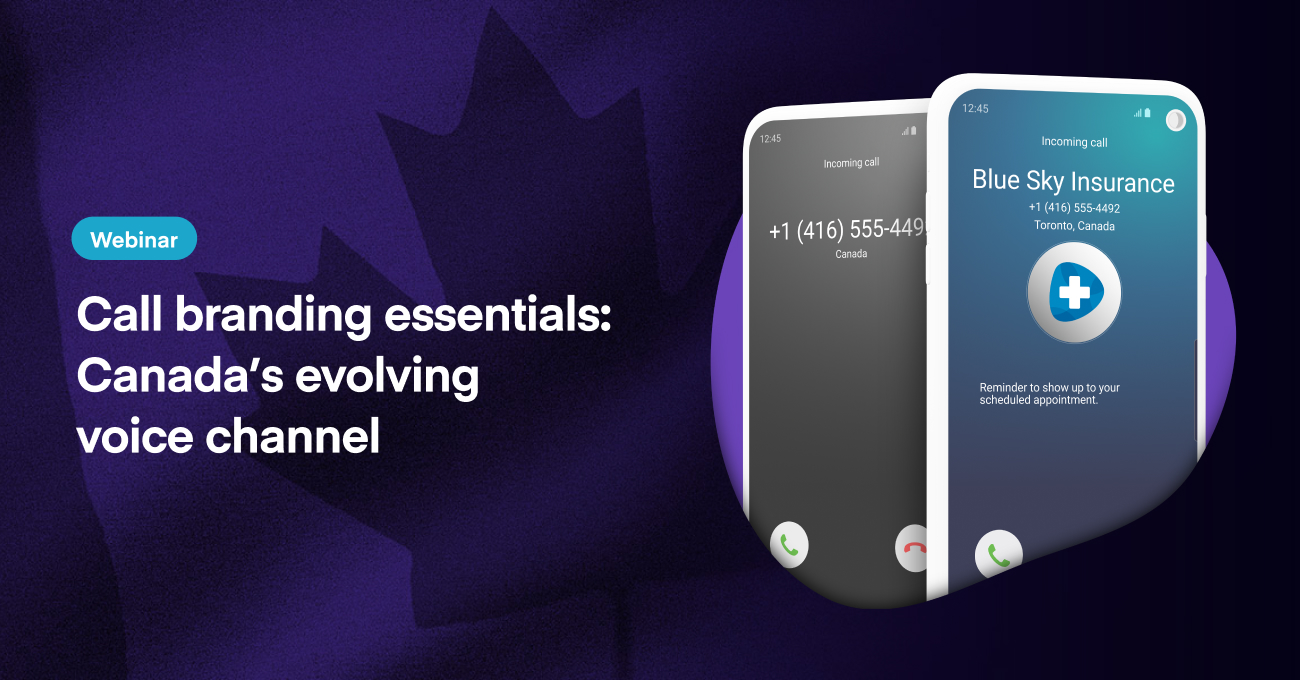
Hiya’s data shows that one in every five unidentified calls received in Canada is flagged as a suspicious call, and Canadians experience one of the highest rates of fraud calls in North America. The prevalence of these unwanted phone calls results in poor consumer trust in the voice channel in Canada, as unidentified calls are less likely to get answered, slowing down deal and service speeds and negatively impacting revenue and customer satisfaction.
That was the picture painted of the call landscape in Canada in a recent webinar hosted by CCW Digital titled Call Branding Essentials: Canada’s Evolving Voice Channel. Presenting for Hiya were senior product marketing managers Michelle Wallace and Alex Salkin. Brian Cantor, principal analyst at CCW Digital, served as the host.
The problem: Scam calls are hurting businesses
Salkin pointed out that even though voice is the #1 preferred communication channel for consumers, skyrocketing rates of suspicious phone calls erode trust in the channel — so much so that 79% of unidentified calls are unanswered.
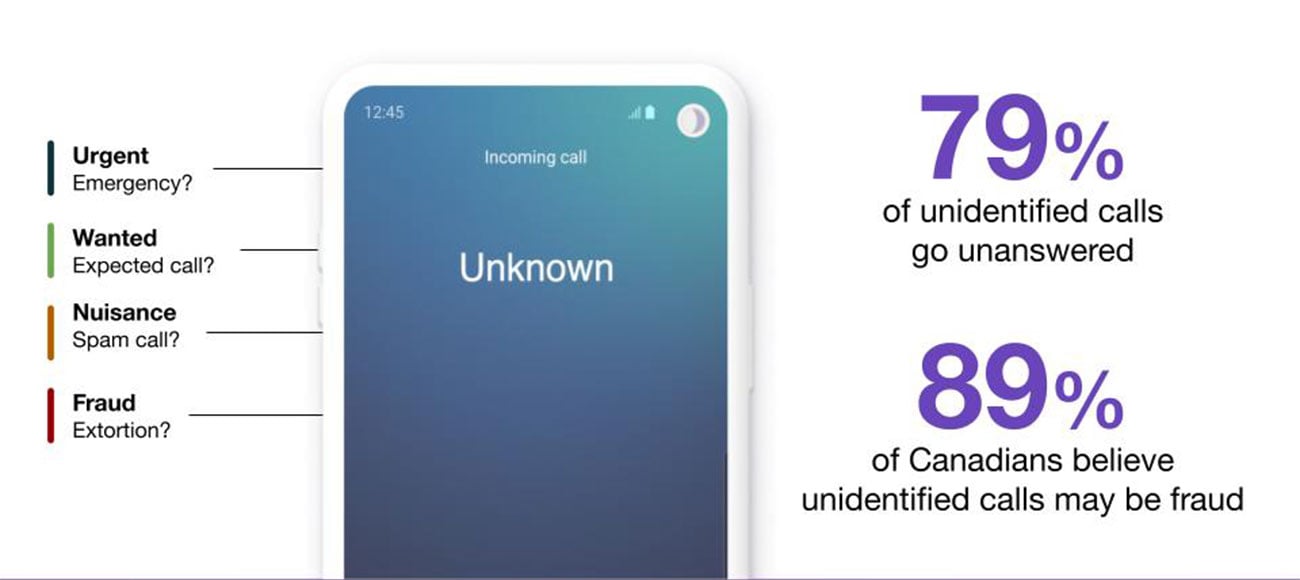
Because of the prevalence of scam calls, Canadian voice providers are adding protections such as call labeling. For example, a suspicious incoming call might be labeled “likely spam” or “likely fraud,” so the consumer can make an informed decision about how to engage with the call.
5 essentials for Canadian businesses to understand
So, how can Canadian businesses overcome consumer distrust and understand how their calls appear to customers? Salkin and Wallace explained five essentials that Canadian businesses need to know about the call landscape in Canada, including tools that can help assess and improve call performance.
#1. Add branded calling
Branded caller ID is a technology that enables businesses to display their name, logo, and reason for the call on the recipient’s mobile device so consumers know who is calling.
“If a consumer receives a call that only shows the phone number, that actually provides zero information about the call,” said Wallace. “Branded calling lets consumers take a wanted call rather than letting it go to voicemail.”
Wallace mentioned that branded calling has been rapidly expanding in Canada and that in the next year, branded calls will be able to appear on a large majority of Canadians’ mobile devices.
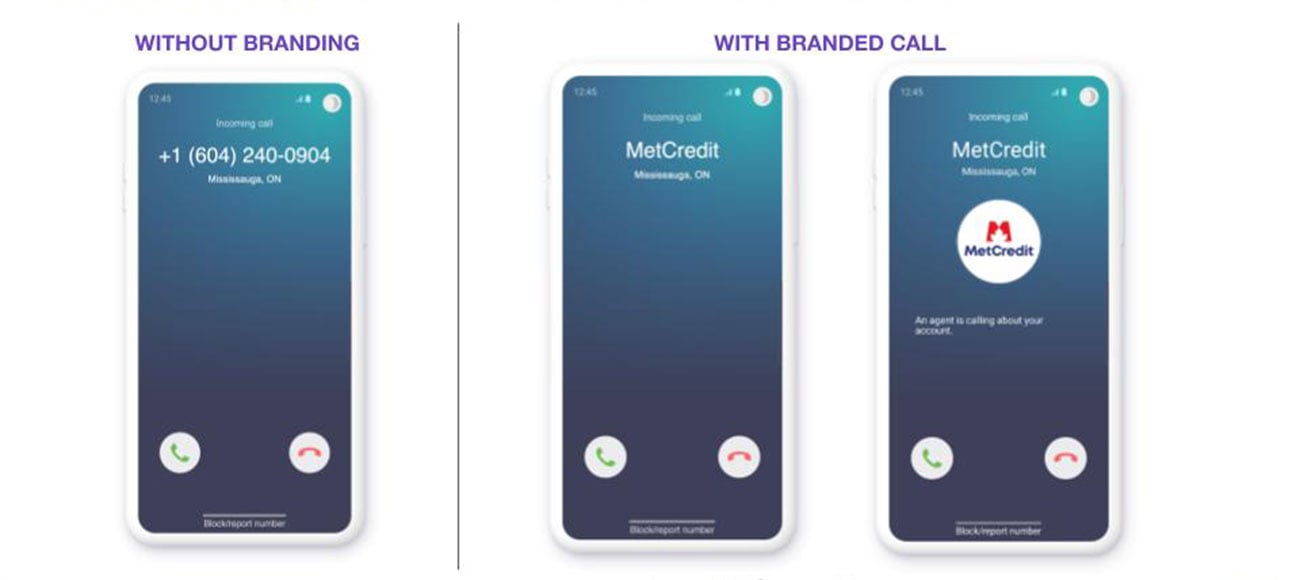
Shown is an example of an incoming call with and without Hiya’s branded caller ID.
Learn more about branded caller ID in Canada.
#2. Register your business
Another important essential for Canadian businesses to understand is business registration. Business registration is a simple and free way for businesses to identify themselves to carriers to join the fight against phone fraud. It’s an essential step that every business should take to help protect consumers and improve trust in the voice channel.
By registering your business, you tell voice providers who you are and what numbers you use. Registering makes it easier for carriers to identify deceptive callers who try to avoid detection. Businesses that proactively identify themselves through registration establish themselves as trustworthy callers — less likely to make aggressive or unwanted phone calls than an unknown caller.
Canadian businesses can click here to register their business numbers for free.
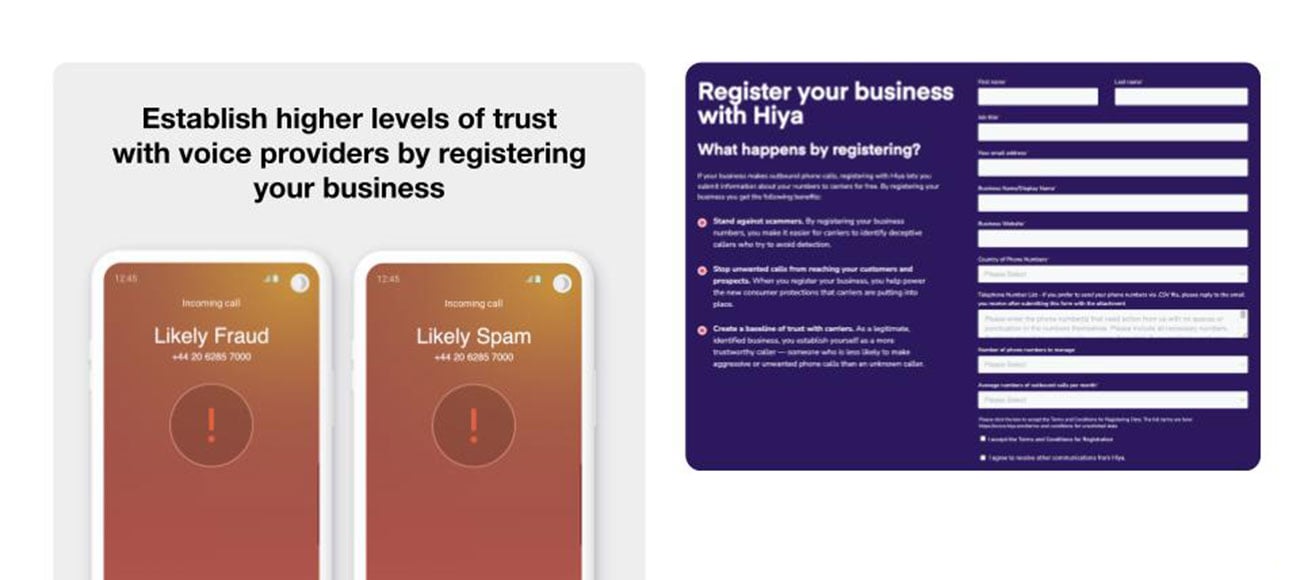
Businesses can identify themselves as voice providers by registering.
#3 Get a free call assessment
Caller trust isn’t just an abstract concept. It’s something that data can quantify. Data can help brands understand how often they’re getting through and how, precisely, their calls appear to customers.
“Many businesses we work with struggle to understand the scope of their call performance issues,” said Salkin. “They may hear anecdotes from customers, but that’s not concrete data to make business decisions around.”
Salkin recommends two free offerings from Hiya: a call assessment and a call inspection.
With the Hiya Call Assessment, a company provides an outbound phone number or set of numbers. Hiya then runs a report looking at the past 30-90 days of calling activity and measures performance based on several metrics, including (but not limited to):
- Answer rate
- Contact rate
- Call duration
- Call attempts
With this information, companies can make more educated decisions on where to focus their efforts — based on actual data.
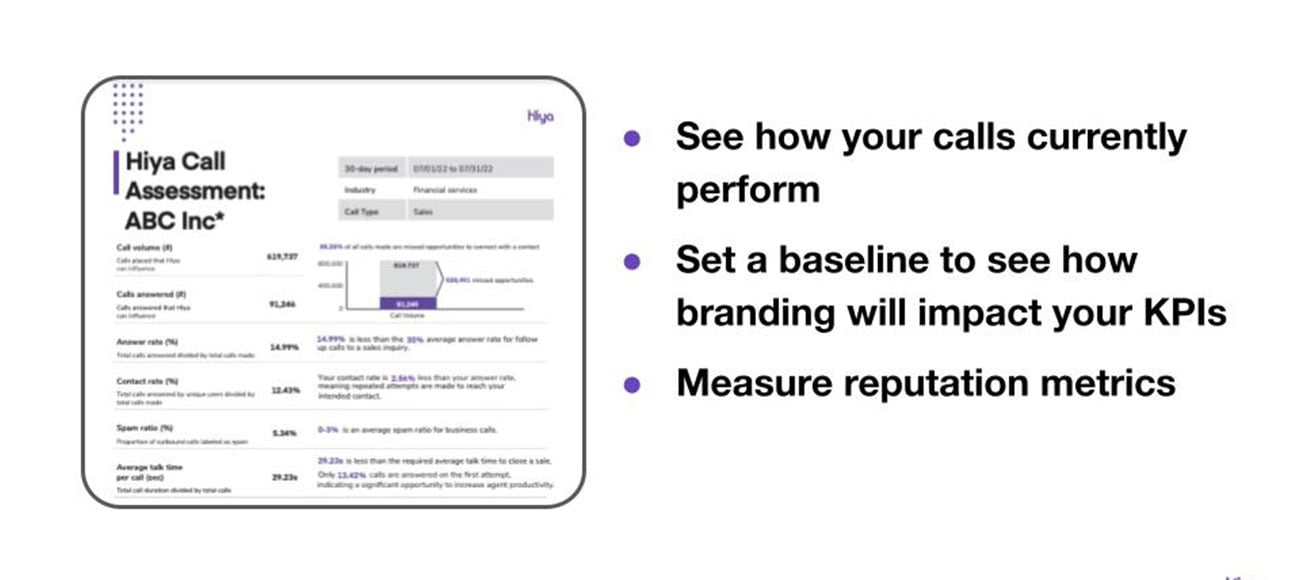
Hiya’s free call assessment shows companies how their calls are performing. (Note: Data depends on region.)
#4 See how your calls appear to consumers
In addition to the call assessment mentioned above, Salkin recommends another free offering from Hiya: a call inspection that shows companies exactly what their outbound calls look like to the consumer. According to Hiya’s State of the Call survey, 65% of Canadian businesses don’t know how their calls display.
With the call inspection, Hiya takes a single number and shows how the number appears across carriers and devices. This allows companies to identify their call branding opportunities across carriers and devices.
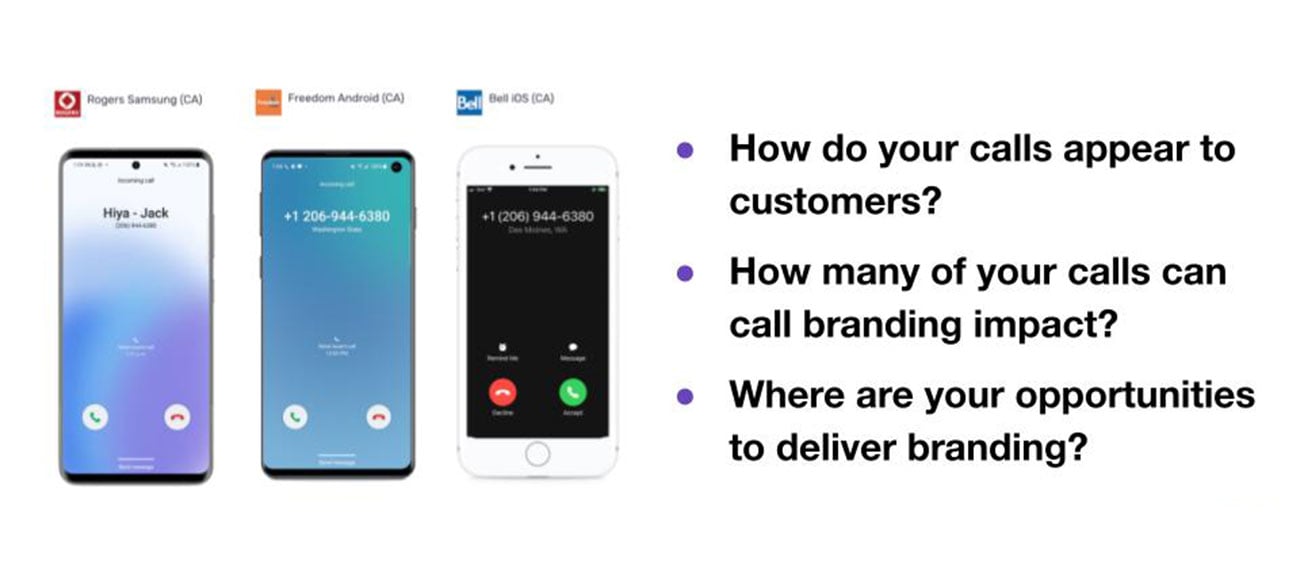
Hiya’s free call inspection lets companies see how their calls are displayed across carriers and devices.
#5. Download the guide 10 Tips to Improve Your Call Reputation
Salkin said customers often ask how to maintain a positive call reputation and avoid spam labels. In response, Hiya has published a guide called 10 Tips to Improve Your Call Reputation. The guide gives practical tips on what callers should and shouldn’t do to create a positive user experience and maintain a good reputation.
For example, one of the key data points used to determine whether to label a call is suspicious or not is direct user feedback. When a call is blocked or reported as suspicious, those are signals sent directly from consumers and represent a very strong signal that calls from those numbers are unwanted.
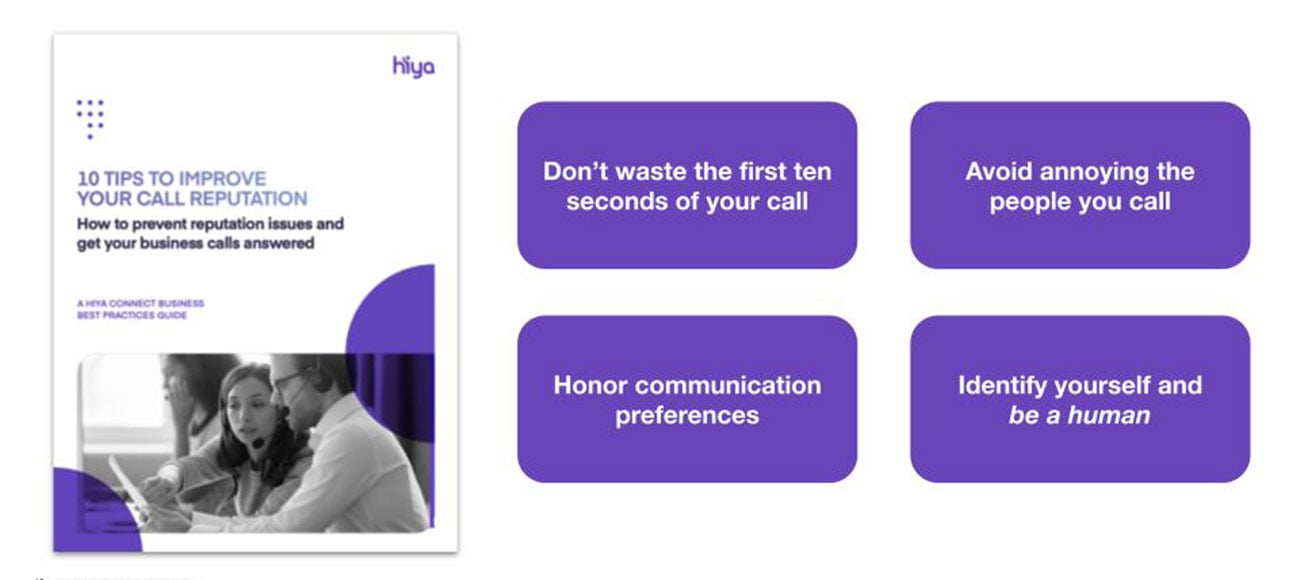
Learn more
For more information, Hiya has put together a web page specifically for the Canadian audience. From this single web page, you can link to request a free call assessment and call inspection, register your business, download the 10 tips guide, or schedule a demo to see branded caller ID in action. Visit hiya.com/ca.
Watch the entire webinar by clicking the image below.



